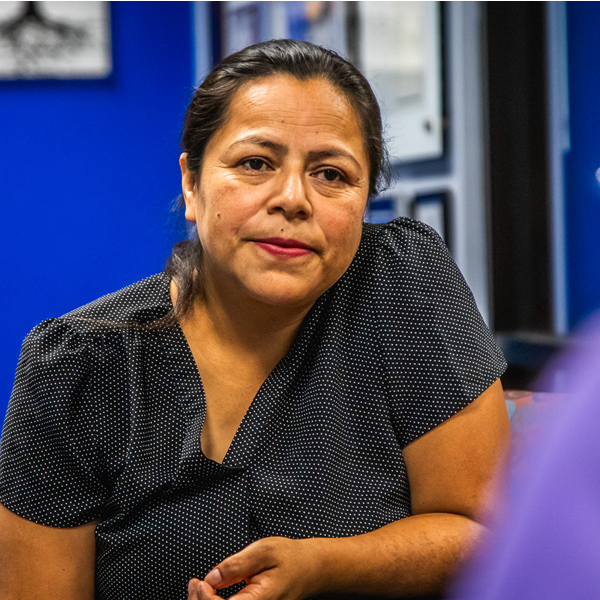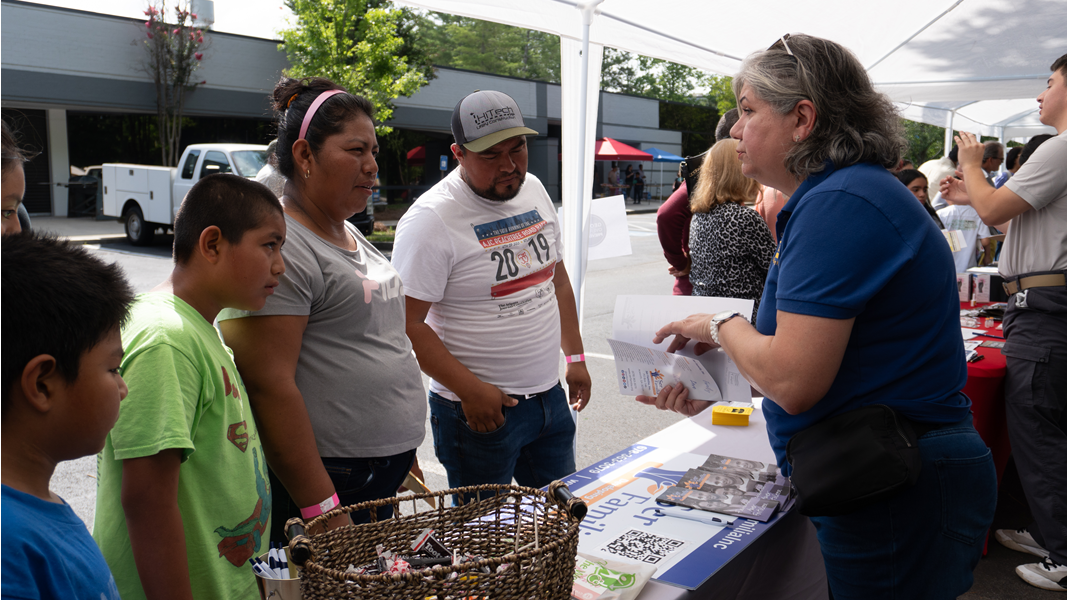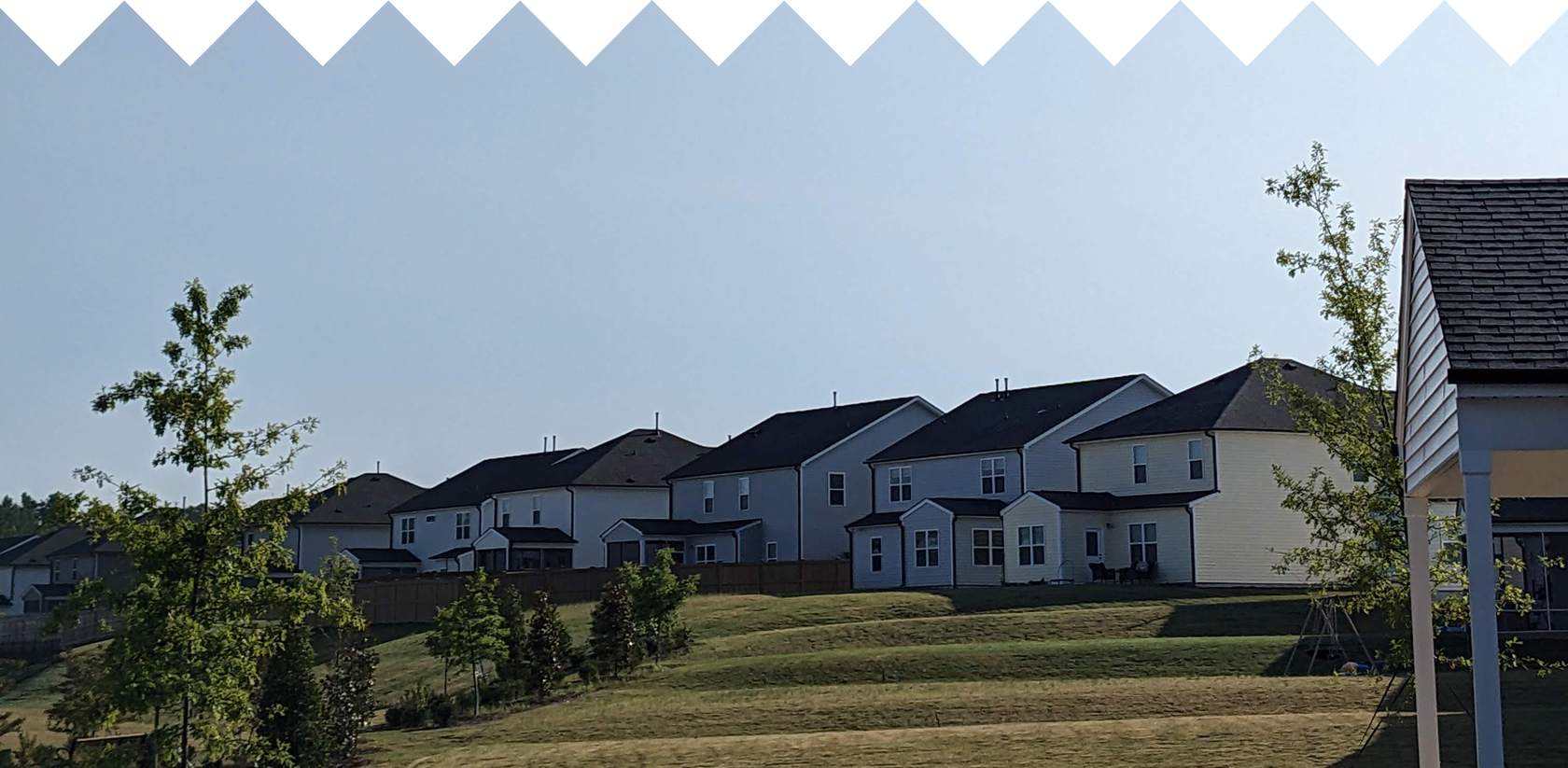In 2022, the median value of Hispanic owner-occupied housing units in Georgia was $227,900, lower than the state average of $245,9001.
Some programs have successfully helped community members achieve homeownership. For instance, the USDA Rural Housing Program was crucial for many families during the recession. However, initiatives like this are not widely known or sufficient to meet the demand, highlighting the need for greater outreach in our communities. Sometimes, even when the funding exists, our local municipalities and counties return money to the federal government24.
USDA’s Rural Housing Service offers a variety of programs, from loans, grants and loan guarantees for single- and multifamily housing, child care centers, fire and police stations, hospitals, libraries, nursing homes, schools, first responder vehicles and equipment, and housing for farm laborers.
Latinos have diverse preferences when choosing where to live. While cost is a significant factor, many also consider the quality of schools, proximity to job opportunities, and potential investment value. There isn’t a single reason that drives their housing choices; instead, decisions are influenced by each household's unique experiences and circumstances.
For recently immigrated families, price tends to be the primary criterion. In contrast, those with greater economic means can afford to prioritize quality of life and access to amenities.

When we moved to our own house, we moved farther away because that is what we could pay. But that changed our community. Before, our kids walked out the door and could play outside. Now, it's not the same.
Aceli Zenil
Many Latino families prefer working with real estate agents with similar cultural backgrounds. When they find such professionals, these agents can help navigate the complex process of homeownership and access to capital. Unfortunately, others fall victim to predatory real estate practices and feel they have few options for reporting these issues.
Social media and word of mouth remain vital sources of information for our community.
Resilience Amidst Rising Prices
Amid the ongoing affordable housing crisis, Latino families increasingly rely on multiple incomes to cover housing costs. Previously, suburbs were beacons of affordable housing for Latino families. However, that is not necessarily true anymore, as wages haven't kept up with rent and home sale prices.
Latino and non-Latino Black households are more likely to experience rent burdens than their non-Latino white and Asian counterparts, meaning they spend over 30% of their income on housing. In 2023, about 52% of Latino households were housing cost-burdened, compared to 33% of white households1.
Because of this, Latino families sacrifice other expenses to secure housing: cheaper phone plans, dramatically reduce utility consumption, skip medicine or going to the doctor, and buy fewer things to be comfortable. Having a roof is always the most important thing.
My two-bedroom apartment rent increased dramatically in just a few years. Without support from someone else's income, all your salary goes to housing costs
Henry Reyes
Fannie Mae reports that consumers who identify as Black and Latino face numerous obstacles in their housing journey. Many experience barriers to savings due to higher housing cost burdens, thin credit profiles, and elevated debt-to-income ratios. Limited funds for security deposits, down payments, closing costs, lower credit scores, and issues with credit invisibility further complicate their paths to homeownership23.
Fannie Mae, or the Federal National Mortgage Association, is a government-sponsored enterprise (GSE) established in 1938. Its primary purpose is to increase the availability and affordability of mortgage credit for homebuyers.
Additionally, Black and Latino consumers often have smaller savings for post-purchase maintenance or to cover income disruptions and tend to face higher rates of housing repair needs. However, this also presents opportunities to create solutions that benefit both consumer groups23.
“If you don’t like the rules, you can go.”
The two major housing issues faced by low-income Latinos in Georgia are deplorable and unstable living conditions due to abusive landlords and the threat of eviction. As families are priced out of better housing, they are often forced to settle for worse conditions out of desperation25.
Poor housing conditions put Latino families at serious risk for health problems. Michael Lucas, Executive Director of the Atlanta Volunteer Lawyers Foundation (AVLF), shares that about 60% of cases at AVLF involve housing repairs tied to health issues, mainly caused by mold and insects that can worsen respiratory problems like asthma. New state legislation is aimed at improving tenant housing quality, though it lacks a clear definition of what that means and a language access component26.
The margin for error is incredibly slim for low-income families of all backgrounds. Rising housing costs and limited protections mean families often have to make tough choices: they may sacrifice essential expenses, such as food, air conditioning, or medication, or send their children to work to help cover household costs. Both decisions can have long-lasting, multi-generational effects.
Out-of-state corporate investors further complicate the situation, while tenant rights in Georgia remain weaker than national standards. The state has no rent control or stabilization laws, and eviction laws generally favor landlords27.
The Atlanta metro area has the largest share of investor-owned single-family rental properties among major U.S. cities, with approximately 25% of the market—around 72,000 properties—owned by investors, according to the U.S. Government Accountability Office28.
Out-of-state corporate investors are companies or individuals who buy properties in a state different from where they are based. They often invest in residential or commercial real estate to earn rental income or flip properties for profit. Their purchases can drive up housing prices and make it harder for local residents to find affordable homes.
Despite these challenges, there are also many examples of compassionate landlords, often local and smaller in scale. They understand that it is usually more economical to empathize with tenants and explore alternatives, like rent payment plans, to avoid the expenses associated with eviction processes. This approach is possible when landlords establish clear communication channels and expectations with tenants. In contrast, larger landlords tend to follow strict formulas and processes that fail to accommodate cultural differences and hardships tenants face.
Michael Lucas also points out that the struggles with unstable and unfair housing hit immigrants the hardest. Tenants from mixed-status families often feel scared to speak up for their rights, and some landlords even threaten eviction just for asking for repairs—often referred to as “informal evictions29.”
Some immigrant families pay others to handle their paperwork, making them dependent on intermediaries who might leave them hanging when problems come up. Predatory practices are also common with landlords and subletters, who can impose unreasonable rules on tenants renting shared spaces.
Because of the lack of low-cost or sliding-scale legal representation, as well as the fear of repercussions because of documentation statuses, many Latinos find legal support for housing issues through nonprofits or community organizations without restrictions related to immigrant status.
These financial pressures and limited space for action due to documentation barriers lead many Latino families to live in shared housing arrangements, relying on friends, relatives, or neighbors to keep a roof over their heads. Although this helps families cope with rising childcare, housing, and legal costs, it can lead to overcrowded living situations.

I first lived with my aunt and nine other people. I used to think that was common until I started school and realized it was not.
Leslie Gutierrez
8.6% of Latino households have more than one occupant per room, significantly higher than the rates for white (1.1%), Black (2.5%), and Asian households (4.6%). In general, Latino households tend to be larger, with an average size of 3.4 people, compared to the state average of 2.71.
Safe, affordable, and quality housing is a key social determinant of health, impacting access to services and overall well-being, including mental health issues like anxiety, depression, and post-traumatic stress disorder. Substandard housing exposes residents to health and safety risks such as vermin, mold, water leaks, and inadequate heating or cooling systems.
A Place to Call Home
Securing safe and stable housing is a constant struggle for Latinos, especially recent arrivals and individuals in need. The overcrowded living conditions of many families not only affect their physical living environment but also contribute to stress and uncertainty, making it difficult for families to thrive. Unstable or unsafe housing situations like these could categorize families as insecurely housed.
The concept of experiencing homelessness or being insecurely housed varies across cultures. Santiago Marquez, CEO of the Latin American Association of Georgia (LAA), emphasizes that there is a homelessness issue within the Latino community, but it is significantly undercovered, especially in suburban areas like Gwinnett.
Despite the proportion of Latino individuals experiencing homelessness has remained consistent over the past few years, the total number of those experiencing homelessness has been steadily increasing. According to Point-in-Time Count (PIT Count) from the U.S. Department of Housing and Urban Development (HUD), 5.2% of homeless individuals identified as Hispanic or Latino in 2019, while it was 5.5% by 202330.
The Point-in-Time Count (PIT Count) from the U.S. Department of Housing and Urban Development (HUD) is widely used to track homelessness and inform policy decisions. HUD conducts the Point-in-Time Count (PIT Count) annually on a single night.
However, the PIT Count only captures those unsheltered or residing in emergency shelters, transitional housing, and Safe Havens on a single night. This results in an underrepresentation of specific groups, such as single mothers and Latinos, who often find temporary accommodation with relatives or friends.
In contrast, the Georgia Department of Education (GaDOE) uses a broader definition of homelessness, including those in insecure housing situations like hotels or couch surfing. In 2024, GaDOE reported 46,070 homeless students in Georgia, with 6,624 (14.4%) identifying as Hispanic31.
GaDOE data highlights the difference in housing arrangements of children experiencing homelessness or being insecurely housed. In 2024, the school districts with the highest number of homeless Hispanic students were Forsyth (621 students), Hall (541), and Gwinnett (471)31.
On the other hand, for victims of domestic abuse and those with limited documentation, it is significantly challenging to escape their situations due to a lack of support services and shelters that accommodate their needs.
Accessing the Resources Available
Throughout the process of accessing safety net programs and understanding tenant rights, there are persistent challenges, from a lack of information and cultural appropriateness to limited access and protection.
In rural areas, service providers are extremely scarce, making it nearly impossible to find organizations equipped to help Latinos or non-citizens. Luis Zaldivar, Georgia director of CASA, points out, “Latinos are everywhere in Georgia, but the infrastructure of supporting organizations doesn’t match the need. When people seek services, they may have to travel 3 to 6 hours, leaving them feeling isolated.”
Barriers such as documentation status and anti-immigrant rhetoric significantly impact Latinos' willingness to enroll in available programs, even when their children qualify. Although 18.9% of Latinos in Georgia live in poverty, only 11.2% of Latino households receive Supplemental Nutrition Assistance Program (SNAP) benefits1. This discrepancy may be partly due to the high percentage of low-income Latinos who are noncitizens and, therefore, potentially ineligible for the program.
Government agencies often lack cultural and linguistic capacity, making it challenging for families to access services. Rigid and unrealistic requirements for nonprofit organizations to partner in these efforts, coupled with a history of underinvestment from philanthropy targeting Latinos and immigrants, contribute to a distrustful environment. Many nonprofit organizations lack staff and volunteers with the lived experience and language to sufficiently serve Georgia Latinos in need of assistance. This makes it difficult for many Latinos to feel confident in seeking assistance.
The Latino Community Fund Georgia (LCF) constantly updates their map of Spanish-speaking and Latino-serving organizations in the state. Explore the map and download the list of resources available here.
In addition, a deep sense of pride in self-sufficiency often prevents families from accessing the support they deserve. This pride can lead them to forgo resources that are available to them.

While efforts have been made to expand resources and access to food, many families face shame when seeking help from food pantries and other services, making the initial visit challenging. Parents often prefer welcoming locations with friendly staff who can provide emotional support and understand that food insecurity is often a symptom of broader challenges.
According to Feeding America, in 2022, 18% of the Latino population in Georgia was food insecure, compared to 13% of the overall population32. Although there is limited information on food access to agricultural workers, a 2011 study from Emory University graduate students revealed that migrant farm workers were at extreme risk of food insecurity. An estimated 62.8% of migrant farm workers reported insufficient food, with non-H-2A workers facing nearly three times the risk of food insecurity than their H-2A counterparts33.
Experiences that provide culturally relevant food in a way that maintains dignity and allows families to access the nourishment they need for school, work, and daily life remain limited in Georgia.
While food banks offer affordable options, they often lack culturally appropriate foods. Fresh produce is particularly scarce, and most offerings consist of canned goods. Logistical challenges also limit access; many women attend walk-up services, carrying boxes while managing their children. Drive-up services are more popular but aren’t available to everyone.
Even though undocumented individuals are required to pay federal taxes using an Individual Tax Identification Number (ITIN), they cannot access safety-net benefits in Georgia. As a result, data from programs like Food Stamps, Medicaid, Medicare, and TANF do not include undocumented individuals.
For this reason, Latino individuals tend to engage with community-based partners rather than official channels. We often rely on informal networks and social media for support, using these channels to connect with trusted financial advisors, real estate agents, and job opportunities. Community networks play a vital role in linking families to resources and opportunities.
Additionally, Latino-serving businesses act as important sources of information for families, offering guidance and support. These businesses are especially valuable for recent immigrants, serving as community assets that help families navigate complex systems and find ways to thrive.






